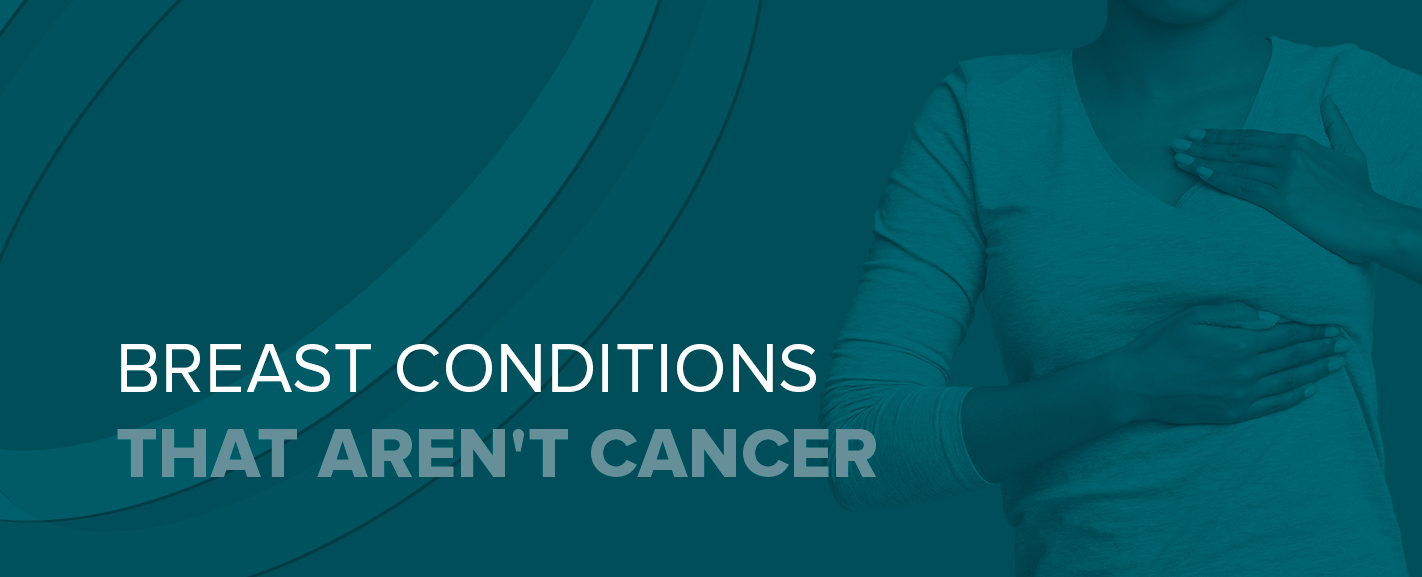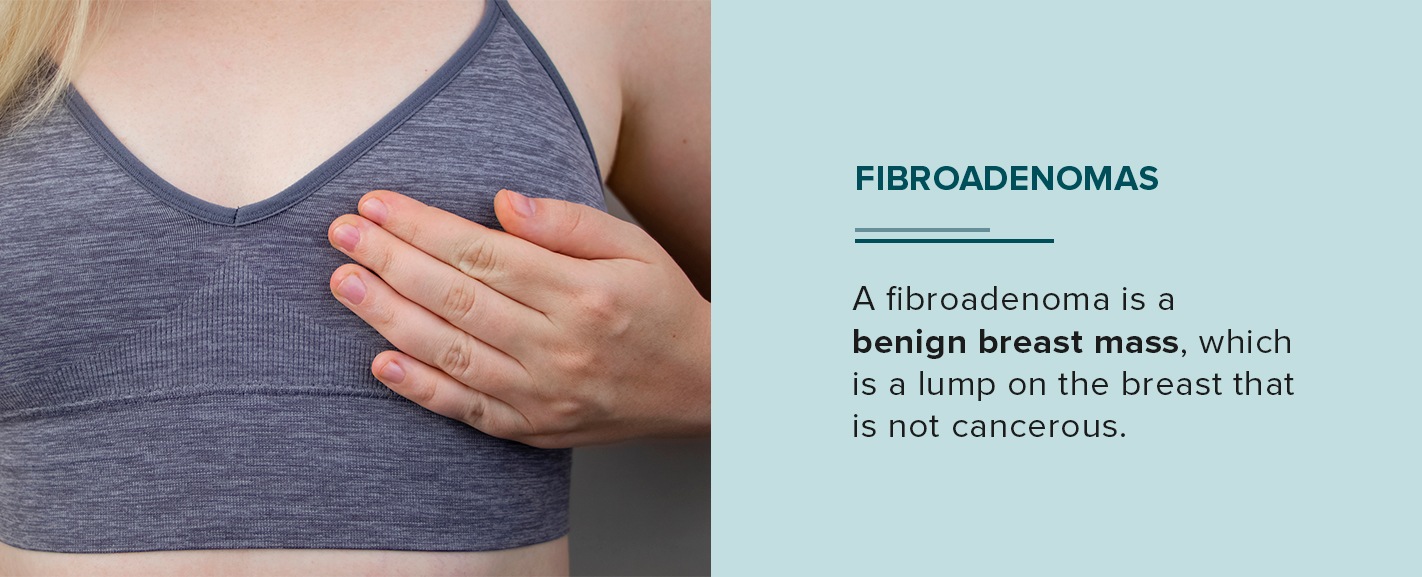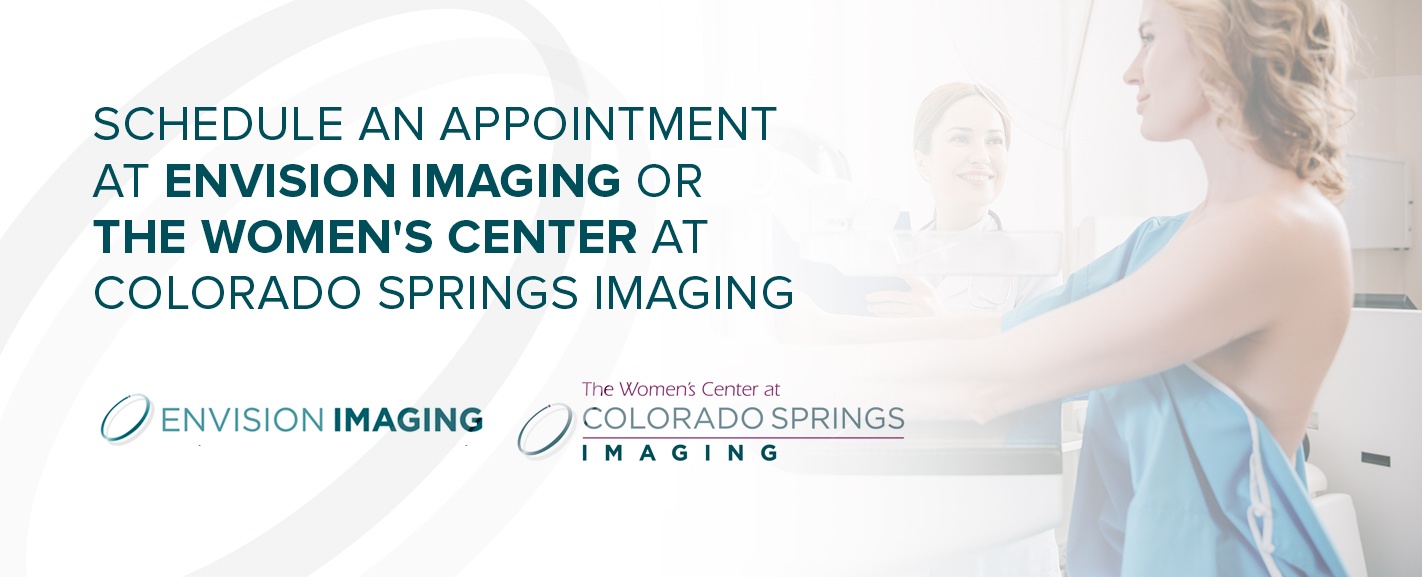Breast Conditions That Aren’t Cancer

Many women are taking ownership of their breast health by becoming more aware of breast cancer symptoms and unusual changes in the breast to look out for. While breast cancer is an extremely important disease to be informed about, there are other noncancerous breast conditions for women to familiarize themselves with so they aren’t alarmed every time they notice a change in their breast. To help illuminate these potential health issues, we’ll cover a few breast conditions and possible changes to your breast that aren’t cancer.
Breast Problems That Aren’t Cancer
Before assuming a mass is breast cancer, consider the following common, noncancerous breast conditions:
1. Breast Cysts
A breast cyst is a sac filled with fluid located in the breast tissue. Any woman can develop a breast cyst, regardless of age. Typically, the cause of breast cysts has to do with hormonal changes, and they often appear during a woman’s reproductive years or when she is premenopausal. Because breast cysts are related to hormones, there is nothing a woman can do to prevent them from happening.
A breast cyst feels like a lump and can be painful, especially right before the menstrual cycle begins. While some breast cysts can be felt, others may be too small to feel. Also, a breast cyst may come and go depending on where a woman is in the hormone cycle of menstruation.
These are the three most common types of breast cysts:
- Simple cyst: This variety of cyst is a single fluid-filled sac.
- Complicated cyst: This term applies to a bunch of cysts grouped next to each other.
- Complex cyst: This type of cyst is less common and involves a very small mass inside of the cyst.
Although there is nothing a woman can do to get rid of a breast cyst because it’s based on hormones, large cysts can be treated to reduce pain. If a cyst is big enough to cause pain, an aspiration may be performed. During an aspiration, local anesthesia is applied to the affected area and a needle is used to draw out fluid and drain the cyst. Usually, breast cyst pain is immediately gone after an aspiration.
2. Lobular Carcinoma in Situ
Lobular carcinoma in situ (LCIS) is an area of abnormal cell growth, which raises a person’s risk of developing breast cancer. Although LCIS is not a true breast cancer, the abnormal growths in the lobules — the glands at the end of breast ducts that produce milk — can lead to invasive breast cancer later in life.
Usually, LCIS does not cause a lump on the breast. Instead, LCIS is most often diagnosed when a woman is getting screened for a different breast problem nearby. Typically, LCIS does not require treatment and most women with LCIS are advised to receive regular mammograms to monitor the condition and make lifestyle changes that will decrease their chances of developing breast cancer. However, some cases of LCIS may call for surgery or medication.
3. Fibroadenomas
A fibroadenoma is a benign breast mass, which is a lump on the breast that is not cancerous. Similar to breast cysts, fibroadenomas are related to hormone levels and often appear during puberty or when women begin taking birth control or breastfeeding. Unlike cysts, fibroadenomas feel more like a hard marble in the breast and may slightly increase the chance of breast cancer developing.
Most doctors recommend removing a fibroadenoma, especially if it steadily increases in size. A doctor can monitor a patient’s fibroadenoma through regular ultrasounds to check whether the mass has grown or changed. If a fibroadenoma grows, changes or causes pain, it is recommended the mass is surgically removed.
4. Mastitis
Mastitis is a breast infection that may occur for a variety of reasons. Most commonly, mastitis is caused by a milk duct becoming blocked and infected in women who are breastfeeding. Other causes of mastitis include smoking, which impacts the blood vessels around the nipple areola, and diabetes, which often results in poor blood supply and infection.
Symptoms of mastitis typically include breast pain, tenderness, redness and lumpy or warm breasts. In some cases, someone with mastitis may also experience a fever and chills. To diagnose mastitis, a patient will need an imaging test like a mammogram or ultrasound. Most often, the infection can be successfully treated with antibiotics and a surgical procedure is not necessary.
If left untreated, mastitis can turn into an abscess — a collection of fluid or pus pocket in the breast. A breast abscess can be quite painful and will need to be drained by a medical professional. In severe cases, multiple aspirations or surgery may be needed to remove the fluid.
Other Common Changes in Breasts That Aren’t Cancer
In addition to the breast conditions listed above, there are a few other common breast changes that are not indicative of cancer. Here are five instances in which a woman is more likely to experience changes in her breasts:
- During the menstruation cycle: Up to a couple of weeks before starting her period, a woman’s breasts might feel tender, swollen or painful. Sometimes, extra lumps even appear on the breast. These symptoms are normal and simply mean there is a bit of extra fluid in the breast area. By the end of the cycle, this excess fluid should be gone.
- While pregnant: In preparation for the baby, the breast glands that produce milk increase in size and number during pregnancy. This process may make the breasts feel lumpier than usual, but it is not a cause for concern.
- When breastfeeding: Breastfeeding can result in mastitis if a milk duct gets blocked. Although this can be a painful condition, a doctor can provide effective treatment options to resolve the issue.
- Just before menopause: As a woman approaches menopause, she may get her period less often and experience changes in her hormone levels. Even when a woman is not menstruating, these hormonal shifts can make the breasts feel more tender.
- Taking some medications: Certain medications and treatments like hormone therapy, injections or birth control methods can make the breasts denser. Because this change tends to make mammograms more difficult to read, patients should always make their doctor aware of any hormones they are taking.
Although these breast changes are usually not cancer, you should still make a mammogram appointment to check and be sure whenever you notice a distinct difference in your breast tissue. Talk with your doctor about whether an imaging test would be right for diagnosing whether your breast changes are benign.
Schedule an Appointment at Envision Imaging or The Women’s Center at Colorado Springs Imaging
If you need an imaging test to diagnose or monitor a change in your breast, schedule an appointment at Envision Imaging. Envision Imaging offers top-quality imaging scans like mammograms and ultrasounds with fast turnaround times for test results. Along with world-class radiology, we prioritize each patient’s experience by providing compassionate care to everyone who walks through our doors.
Those in the Colorado Springs area can book an appointment with the Women’s Center at Colorado Springs Imaging, and those elsewhere can locate the Envision Imaging center nearest them today.
Sources
- https://www.nationalbreastcancer.org/wp-content/uploads/Breast-Problems-That-Arent-Breast-Cancer.pdf
- https://www.breastcancer.org/symptoms/types/lcis?gclid=CjwKCAiAxp-ABhALEiwAXm6IyZqCwnxlH6AiBI5bg3B_AP6MOGCf9KUXmaDHvzbQATLQ7vp3N2F9NBoCbY8QAvD_BwE
- https://www.cancer.org/latest-news/5-breast-conditions-that-arent-cancer.html




